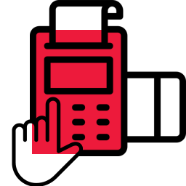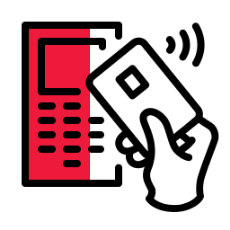Asigură-te
că ai instalat
deja
aplicația de
mobile
banking



During the period 24.12.2025-31.12.2025, operations with fund units, for funds managed by BRD Asset Management S.A.I., will be possible until 13:00, and on 05.01.2026 they will not be possible at all. Thank you for your understanding!
×Daily banking
YOU
SMS banking
The remote banking service provides you with information on your bank accounts directly from your mobile phone.
MyBRD Contact
MyBRD Contact is a service which allows you to quickly make your current operations through the phone.
Other services
Saving and investments
Offers
SME<sup>1-50M Euro</sup>
Online trading
Other services
Our team
Depository services
Safekeeping, registering, monitoring and controlling the applications for subscription or redemption of fund units.
Issuer services
Distribution of fund units, dividends and bond payments. Group distribution services within public offerings.
Global and local custody services
Administration availability of customer accounts to their instructions - financial instruments operations or cash.
Clearing services
Clearing services for transactions made on Bucharest Stock Exchange, Bucharest Clearing House and SIBEX.
Contact
Clearing services for transactions made on Bucharest Stock Exchange, Bucharest Clearing House and SIBEX.
News
News and related materials of our current activity: from business press releases to cultural, educational, sport or technological projects
Scene 9
is an online cultural publication that shapes the portrait of the new generation of creators
Școala 9
is an editorial project dedicated to the pre-university education created by DoR and BRD
Subsidiaries and associated entities
Culture
We invest in culture because we need leaders and projects to remind us where we come from, who we are and where we are heading to.
Education
We strongly believe that the main driver for a higher performance of the education system is the quality of teachers. That’s why our majors programs are focussing on developping teachers’ skills.
Sports
We love sports because they provide us with an exciting journey with some beautiful moments, heroes who win, attract new fans or, on the contrary, struggle with difficult moments.
Environment
Economic development is no longer possible without environmental and social progress. It is our responsibility to propose business models that encourage the positive transformation of the world.
The Civil Society
Community involvement is designed to build sustainable intervention mechanisms so that children and young people in difficult situations can develop their skills
Financial Information
Discover
Learn
Apply
The remote banking service provides you with information on your bank accounts directly from your mobile phone.
Find out more »MyBRD Contact is a service which allows you to quickly make your current operations through the phone.
Find out more »Safekeeping, registering, monitoring and controlling the applications for subscription or redemption of fund units.
Find out more »Distribution of fund units, dividends and bond payments. Group distribution services within public offerings.
Find out more »Administration availability of customer accounts to their instructions - financial instruments operations or cash.
Find out more »Clearing services for transactions made on Bucharest Stock Exchange, Bucharest Clearing House and SIBEX.
Find out more »Clearing services for transactions made on Bucharest Stock Exchange, Bucharest Clearing House and SIBEX.
Find out more »News and related materials of our current activity: from business press releases to cultural, educational, sport or technological projects
Find out more »is an online cultural publication that shapes the portrait of the new generation of creators
Find out more »is an editorial project dedicated to the pre-university education created by DoR and BRD
Find out more »Find here our mass media contacts
Find out more »We invest in culture because we need leaders and projects to remind us where we come from, who we are and where we are heading to.
Find out more »We strongly believe that the main driver for a higher performance of the education system is the quality of teachers. That’s why our majors programs are focussing on developping teachers’ skills.
Find out more »We love sports because they provide us with an exciting journey with some beautiful moments, heroes who win, attract new fans or, on the contrary, struggle with difficult moments.
Find out more »Economic development is no longer possible without environmental and social progress. It is our responsibility to propose business models that encourage the positive transformation of the world.
Find out more »Community involvement is designed to build sustainable intervention mechanisms so that children and young people in difficult situations can develop their skills
Find out more »









- Select the card and enter the 3-digit code on the back of the card.
- Tap on the message that will appear in the mobile app.
- Authorise the transaction
- Return to the payment page and confirm payment
Quick and easy. That's why we recommend installing the You mobile app on your phone.

Enter your dynamic password on the payment page as soon as you receive it, as it is only valid for 5 minutes.
✓ make unsecured payments exceeding EUR 30
✓ make more than 5 consecutive unsecured payments on a card or exceed the cumulative amount of €100.
If you have reached these thresholds, you will need to authenticate by biometrics or 2-factor method. There are certain situations where you can make unsecured payments exceeding the above limits. These are payments with a low reported fraud rate, which the merchant decides and assumes to allow in an unsecured manner, following its own analysis by payment type and customer profile.

The attacker sends an SMS or email advising the card user to give their confidential data in order to win certain prizes or informs them that they are needed due to technical errors that led to the loss of the original data. The attacker usually also sends a web address containing a clone of a merchant's or even bank's website.

In this type of fraud the attacker impersonates someone else to obtain the data needed to make a payment with the user's card.

Criminals install devices to read the card's magnetic stripe data at ATMs or POS machines. Card data is copied when using the terminal. In the case of ATM data copying, a camera is also installed so that the PIN code can also be stolen.

Attackers use software applications that install malicious code on payment devices without the user's knowledge. The purpose of these apps is to collect data and use it for fraudulent payments.
We send you an SMS to confirm certain transactions that have certain risk criteria, such as categories of merchants where transactions with a high degree of risk are possible, transactions that are out of the pattern of frequently performed transactions and others.
If you text us back that you don't recognise the transaction, we block the card to prevent further fraudulent transactions. If you do not reply within 10 minutes, as a security measure, we will temporarily block your card. You can reply to our message within 24 hours. Confirm or deny the transaction and we will unblock or keep the card blocked, depending on your answer.
After 24 hours, please contact MyBRD Contact to confirm or deny transactions.
We apply high security standards (PCI-DSS).
We monitor transactions through dedicated anti-fraud applications.
We are notifying the authorities to identify the offenders.
We would like to remind you that BRD - Groupe Societe Generale has not requested and will never ask any of your authentication data (user code, password or password token) or confidential information related to your card (card number, expiration date, security code or PIN) by phone, nor e-mail or SMS.
These confidential data will be used only for the internet banking authentication or for online payments.
At the same time, if you notice a different appearance of the usual MyBRD Net application (ex. A notification message that the page is unavailable and you are invited to log in again, or to sync your token device), please stop the authentication process immediately and contact as soon as possible through MyBRD Contact tel: 021 302 6161.

